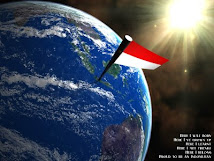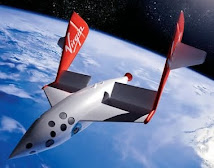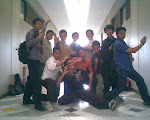"There is no likelihood man can ever tap the power of the atom. The glib supposition of utilizing atomic energy when our coal has run out is a completely unscientific Utopian dream, a childish bug-a-boo. Nature has introduced a few fool-proof devices into the great majority of elements that constitute the bulk of the world, and they have no energy to give up in the process of disintegration."
~Prof. Robert A. Millikan, 1928 at the Chemists' Club (New York)

ROBERT ANDREWS MILLIKAN (1868–1953)
Robert A. Millikan was Caltech’s first Nobel Prize winner. He was awarded the physics prize in 1923 for isolating the electron and measuring its charge.
An impressive experimentalist, Millikan is also credited with the verification of Einstein’s photoelectric equations and with the numerical determination of Planck’s constant.
He also initiated serious study of cosmic rays, and in fact gave them their present nam.
Millikan
left a professorship at the University of Chicago to become director
of Caltech’s new Norman Bridge Laboratory of Physics in 1921.
With George Ellery Hale and A. A. Noyes, Millikan formed the executive council that molded the Institute into a preeminent research university. Refusing the presidency of Caltech, he instead served as the chairman of the council from 1921 until his retirement in 1945.
In his will, he left one-fifth of his estate—$100,000—as an endowment fund for one of his favorite campus organizations: the Caltech Y.
With George Ellery Hale and A. A. Noyes, Millikan formed the executive council that molded the Institute into a preeminent research university. Refusing the presidency of Caltech, he instead served as the chairman of the council from 1921 until his retirement in 1945.
In his will, he left one-fifth of his estate—$100,000—as an endowment fund for one of his favorite campus organizations: the Caltech Y.

THOMAS HUNT MORGAN (1866–1945)
Thomas Hunt Morgan won the Nobel Prize in Physiology or Medicine in 1933 for his chromosome theory of heredity. On the basis of experimental research with the fruit fly (Drosophila), he demonstrated that genes are linked in a series on chromosomes and that they determine identifiable, hereditary traits.
An embryologist by training, Morgan turned his attention to Drosophila
in 1908. On the basis of fly-breeding experiments, he developed a hypothesis
of sex-linked characteristics, which he theorized were part of the X
chromosome of females.
In 1928, he came to Caltech to organize work in biology.
The most influential biologist in America at that time, Morgan pioneered the new science of genetics, the essential science for the future of biology. In 1930, he also established a marine biology laboratory at Corona del Mar (the lab is still in use today).
By then, Morgan had left Drosophila genetics and had returned to his earlier interest in developmental biology.
He often spent weekends at the marine station working with an organism called the sea squirt. He remained on the Caltech faculty for the rest of his career.
In 1928, he came to Caltech to organize work in biology.
The most influential biologist in America at that time, Morgan pioneered the new science of genetics, the essential science for the future of biology. In 1930, he also established a marine biology laboratory at Corona del Mar (the lab is still in use today).
By then, Morgan had left Drosophila genetics and had returned to his earlier interest in developmental biology.
He often spent weekends at the marine station working with an organism called the sea squirt. He remained on the Caltech faculty for the rest of his career.

CARL DAVID ANDERSON (1905–1991)
Carl D. Anderson was a corecipient of the Nobel Prize in Physics in 1936, when he was only 31 years old and still an assistant professor at Caltech.
Anderson won the prize for discovering the positron, the first empirical evidence for the existence of antimatter, in the course of his cosmic-ray researches. (He shared the physics prize with Victor F. Hess of Austria, the discoverer of cosmic rays.) It was Robert A. Millikan, Anderson’s graduate advisor, who had steered Anderson into cosmic-ray research.
Anderson
arrived at Caltech in 1923 as an 18-year-old freshman, and never left.
He discovered the positron in 1932, using a cloud chamber.
Shortly thereafter, Anderson and his graduate student, Seth Neddermeyer, discovered mu-mesons, or muons. During World War II, Caltech scientists produced and tested land and aircraft rockets for the United States Navy.
Anderson supervised the testing of aircraft rockets at China Lake and later visited the front lines in Europe to observe how the rockets performed.
He served as chair of the Division of Physics, Mathematics and Astronomy from 1962 to 1970, and was named emeritus in 1976.
Shortly thereafter, Anderson and his graduate student, Seth Neddermeyer, discovered mu-mesons, or muons. During World War II, Caltech scientists produced and tested land and aircraft rockets for the United States Navy.
Anderson supervised the testing of aircraft rockets at China Lake and later visited the front lines in Europe to observe how the rockets performed.
He served as chair of the Division of Physics, Mathematics and Astronomy from 1962 to 1970, and was named emeritus in 1976.

EDWIN MATTISON MCMILLAN (1907–1991)
Edwin
M. McMillan won the Nobel Prize in Chemistry in 1951 for his discovery
of element 93, neptunium, the first so-called transuranium (heavier
than uranium) element. He shared the prize that year with Glenn T. Seaborg.
McMillan
received his bachelor’s and master’s degrees at Caltech in
1928 and 1929, respectively, then earned his doctorate at Princeton
University in 1932.
He then accepted a faculty position at the University of California, Berkeley, where he was named professor in 1946 and director of the Lawrence Radiation Laboratory in 1958. He discovered neptunium, a decay product of uranium-239, in 1940, while studying nuclear fission.
In 1945, he made a major advance in the development of Ernest Lawrence’s cyclotron, when he synchronized the device’s electrical pulses to allow atoms to accelerate indefinitely. McMillan served as president of the National Academy of Sciences from 1968 to 1971.
He then accepted a faculty position at the University of California, Berkeley, where he was named professor in 1946 and director of the Lawrence Radiation Laboratory in 1958. He discovered neptunium, a decay product of uranium-239, in 1940, while studying nuclear fission.
In 1945, he made a major advance in the development of Ernest Lawrence’s cyclotron, when he synchronized the device’s electrical pulses to allow atoms to accelerate indefinitely. McMillan served as president of the National Academy of Sciences from 1968 to 1971.

LINUS CARL PAULING (1901–1994)
Linus Pauling was the only winner of two unshared Nobel Prizes in different categories. He is also considered by many to be the greatest chemist of the 20th century.
He was awarded the 1954 Nobel Prize in Chemistry for his work on molecular structure and chemical bonds, and he won the Peace Prize in 1962 for his efforts to prevent the testing and use of nuclear weapons.
Pauling
came to Caltech as a graduate student, receiving his PhD in physical
chemistry in 1925.
He then joined the faculty, becoming a full professor in 1931 (at the age of 30), and chair of the chemistry and chemical engineering division six years later.
In addition to his research on chemical bonding, he made important discoveries in molecular biology, such as identifying the genetic defect in the hemoglobin molecule that causes sickle-cell disease.
In 1951, Pauling and Robert Corey discovered the alpha helix structure that serves as a universal structural building block for protein molecules.
In the 1970s, Pauling provoked controversy by suggesting that large doses of Vitamin C would promote good health. After leaving Caltech in 1963, he was a member of the Center for the Study of Democratic Institutions in Santa Barbara, a professor at Stanford University, and director of research at the Linus Pauling Institute of Science and Medicine in Palo Alto.
He then joined the faculty, becoming a full professor in 1931 (at the age of 30), and chair of the chemistry and chemical engineering division six years later.
In addition to his research on chemical bonding, he made important discoveries in molecular biology, such as identifying the genetic defect in the hemoglobin molecule that causes sickle-cell disease.
In 1951, Pauling and Robert Corey discovered the alpha helix structure that serves as a universal structural building block for protein molecules.
In the 1970s, Pauling provoked controversy by suggesting that large doses of Vitamin C would promote good health. After leaving Caltech in 1963, he was a member of the Center for the Study of Democratic Institutions in Santa Barbara, a professor at Stanford University, and director of research at the Linus Pauling Institute of Science and Medicine in Palo Alto.

WILLIAM BRADFORD SHOCKLEY (1910–1989)
William
B. Shockley shared the 1956 Nobel Prize in Physics with John Bardeen and
Walter H. Brattain for their development of the transistor, which largely
replaced the much-larger, less-efficient vacuum tube and made possible
the construction of microelectronic devices.
Schockley received his BS degree at Caltech in 1932; he then earned a
PhD at Harvard. In 1936, he accepted a position on the technical staff
of Bell Labs, where he began the work that ultimately produced the transistor.
He served as director of research for the Antisubmarine Warfare Operations
Research Group of the U.S. Navy during World War II.
Schockley returned to Caltech in 1954 as a visiting professor of physics, then worked for a year as deputy director of Weapons Systems Evaluation for the Department of Defense.
He joined Beckman Instruments, Inc., in 1955, and founded the Shockley Semiconductor Laboratory there. In 1958, he went to Stanford University, where he became the first Poniatoff Professor of Engineering Science in 1963.
He retired in 1974.
Schockley returned to Caltech in 1954 as a visiting professor of physics, then worked for a year as deputy director of Weapons Systems Evaluation for the Department of Defense.
He joined Beckman Instruments, Inc., in 1955, and founded the Shockley Semiconductor Laboratory there. In 1958, he went to Stanford University, where he became the first Poniatoff Professor of Engineering Science in 1963.
He retired in 1974.
Sumber:
California Institute of Technology
http://www.pma.caltech.edu/GSR/physics.html
Nobel Prize




















